A Visit to the Terracotta Warriors Museum
Another epic highlight of our 150 day World Cruise! We flew from Shanghai to Xi'an on an overnight, overland excursion to see the Terracotta Warriors!
We left the hotel at 7:00 AM, arrived at the Terracotta Warriors Museum bus parking lot around 8:30 AM, and then embarked on an epic walk to the entrance. Multiple security checks, ticket scans, and passport checks were required before we even approached a building of interest. The crowds were already teeming, and their numbers only worsened as the day progressed. Typically, 30,000 tickets are issued daily, but during the current five-day holiday, that number increased to 80,000. We could expect what is usually a crowded venue to have nearly three times the crowd.
Our first stop was the Temporary Exhibit Building. There was not much of a crowd outside—everyone was already inside the exhibit!
Two and a half hours after getting on the coach, we met our VIP research archaeologist guide and were finally ready to see what we had come to see—the warriors, up close and personal.
A new exhibition opened in the autumn of 2024 at the Terracotta Warriors Museum, marking the 50th anniversary of the discovery of the Terracotta Army. This exhibition features many warriors from the pits and tombs associated with Emperor Qin Shi Huang.
Here are photos of some warriors on display in the exhibit. It was quite otherworldly to stand next to terracotta sculptures that were specially created to be buried with the Emperor in 210–209 BCE so that they could protect him in the afterlife. Each statue’s face had its own expression, and each body had a different posture and clothing.
Each warrior is signed by the artist responsible for its creation, not to give the craftsman credit, but to identify him if the warrior did not meet the expected standards.
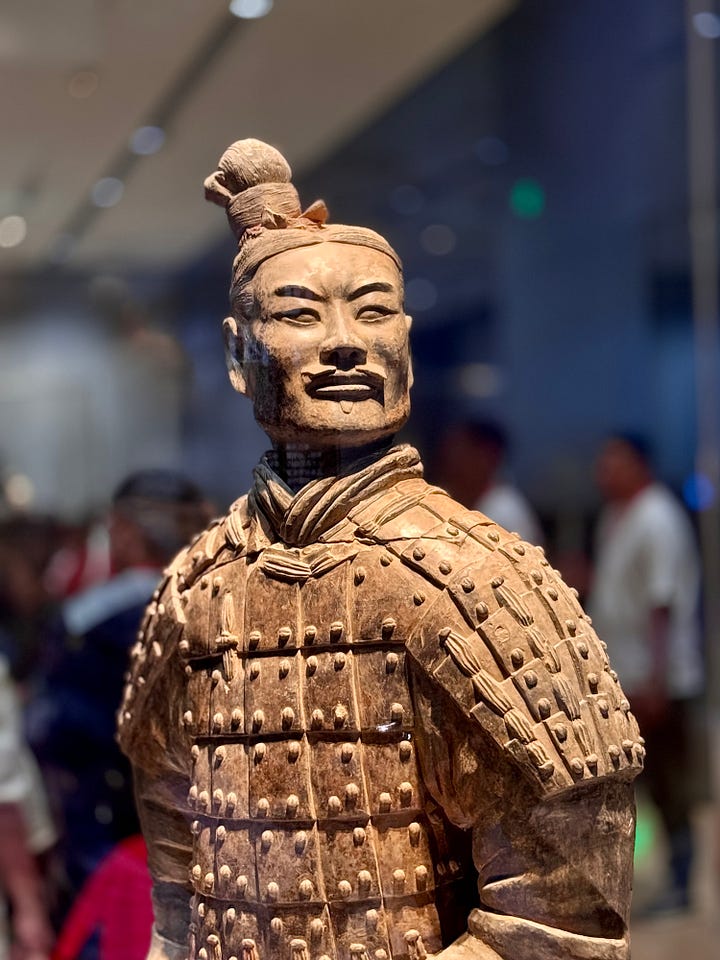

A team of horses was found in front of charioteers, but the chariots, made of wood, had disintegrated.
The warriors, as we see them now, are spectacular. Imagine if we could see them as they were originally created, each painted in brilliant blues, reds, whites, blacks, and browns. The paints were all mineral-based, and traces of many of them can still be seen on some of the statues.
Next post: a visit to the pits to see the armies of warriors, travel to Shanghai, and a stunning city lights show.













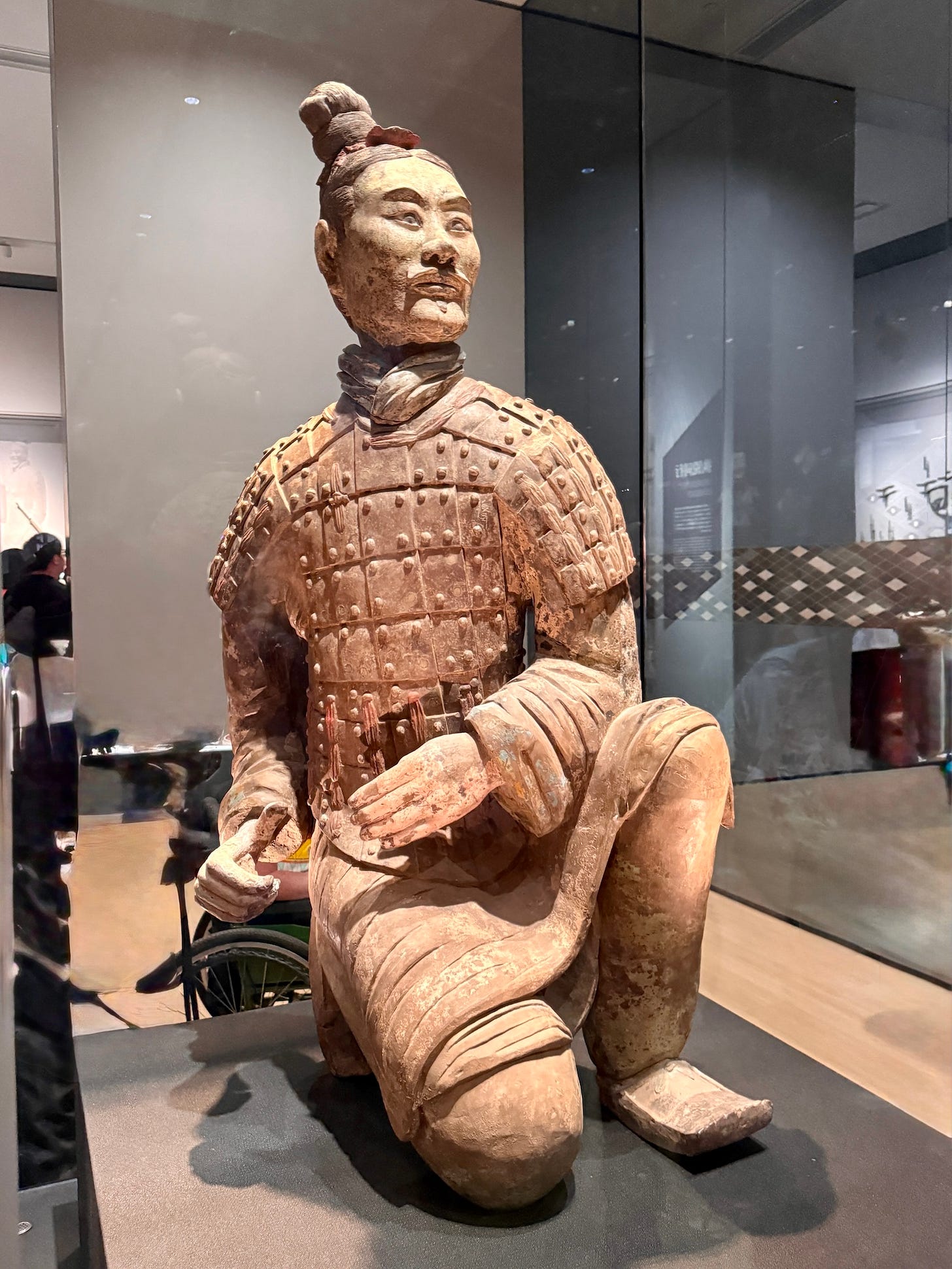

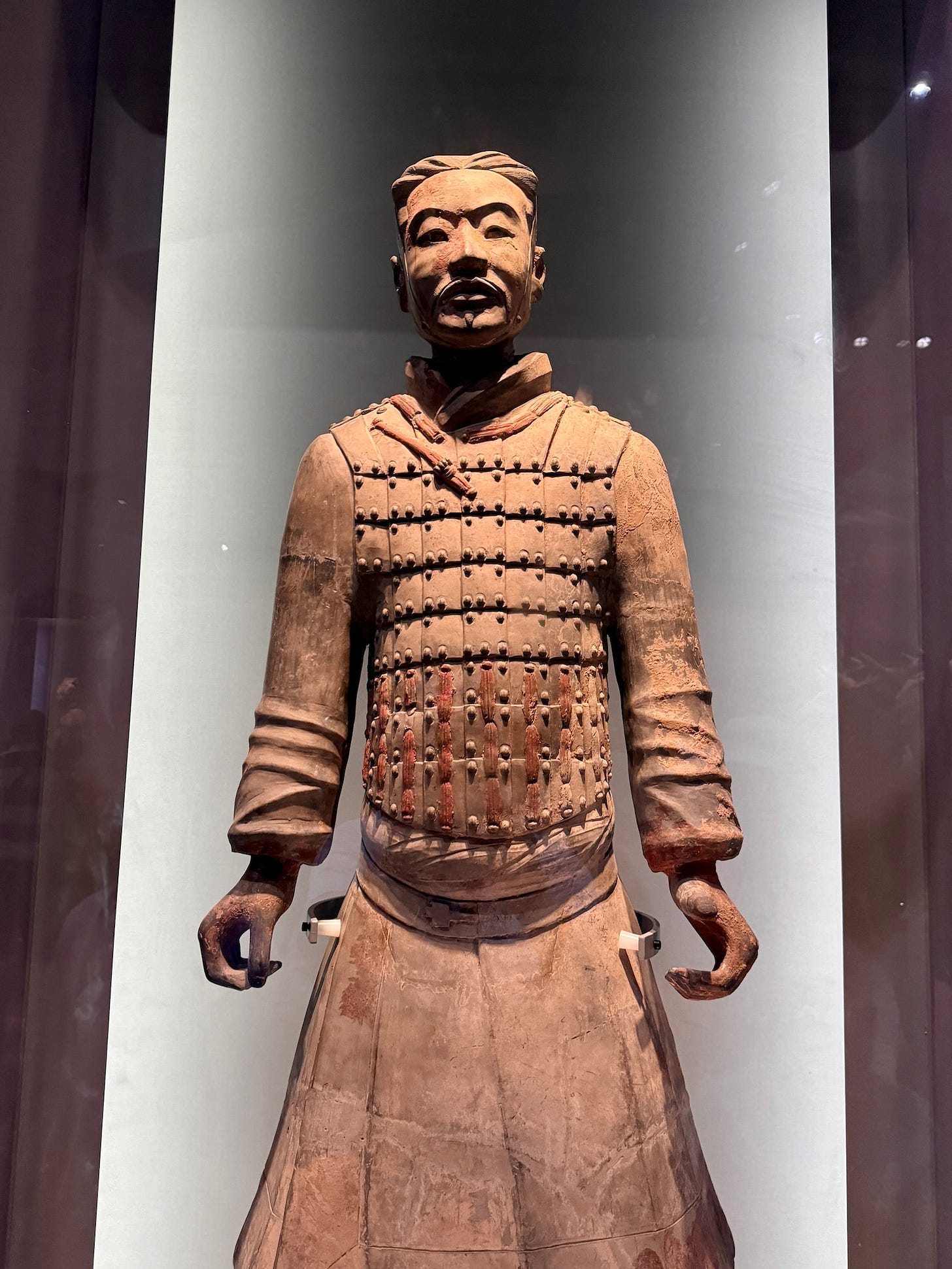

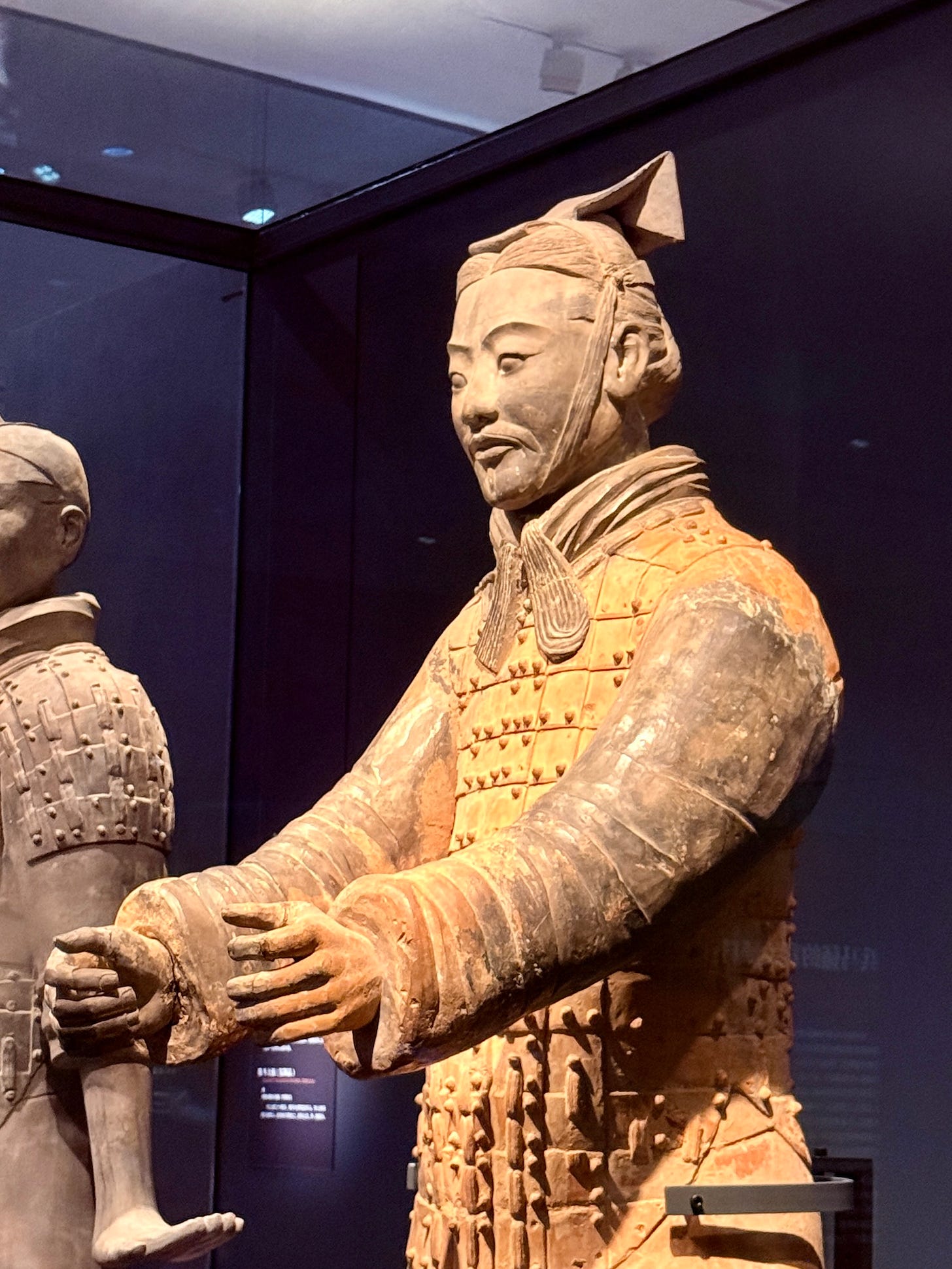
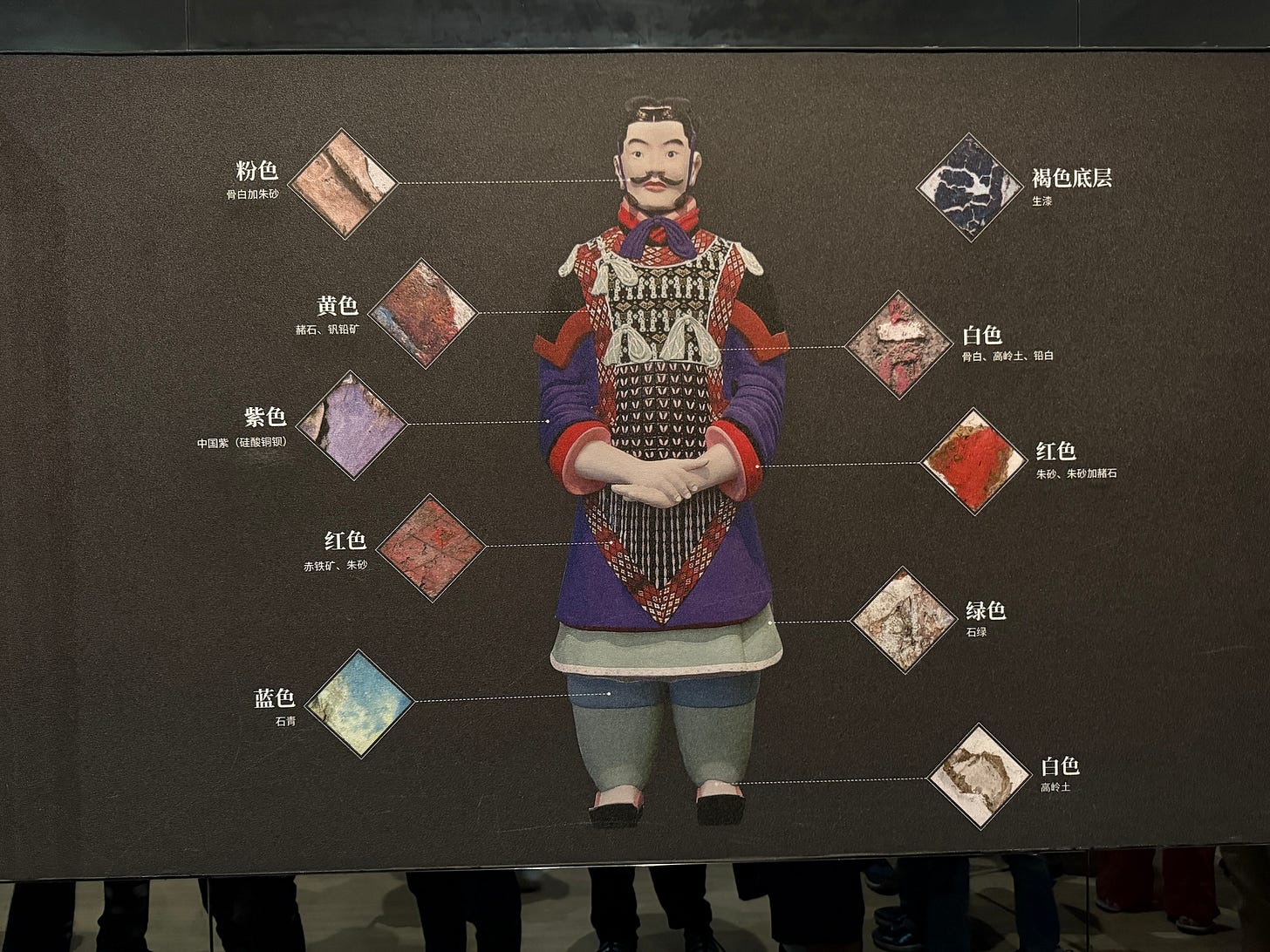

Loved learning something new! What a cool experience!
Fascinating! Thanks for sharing.